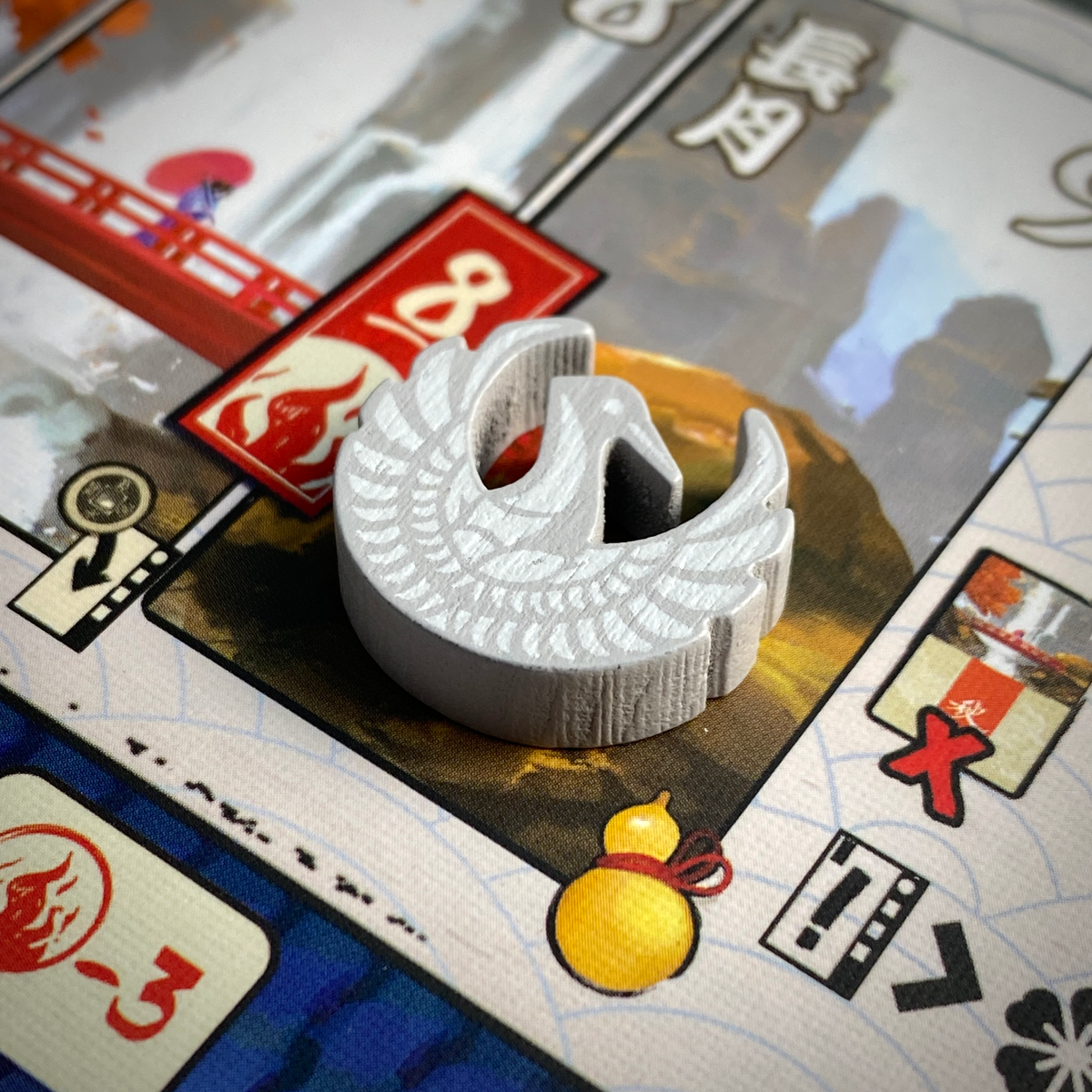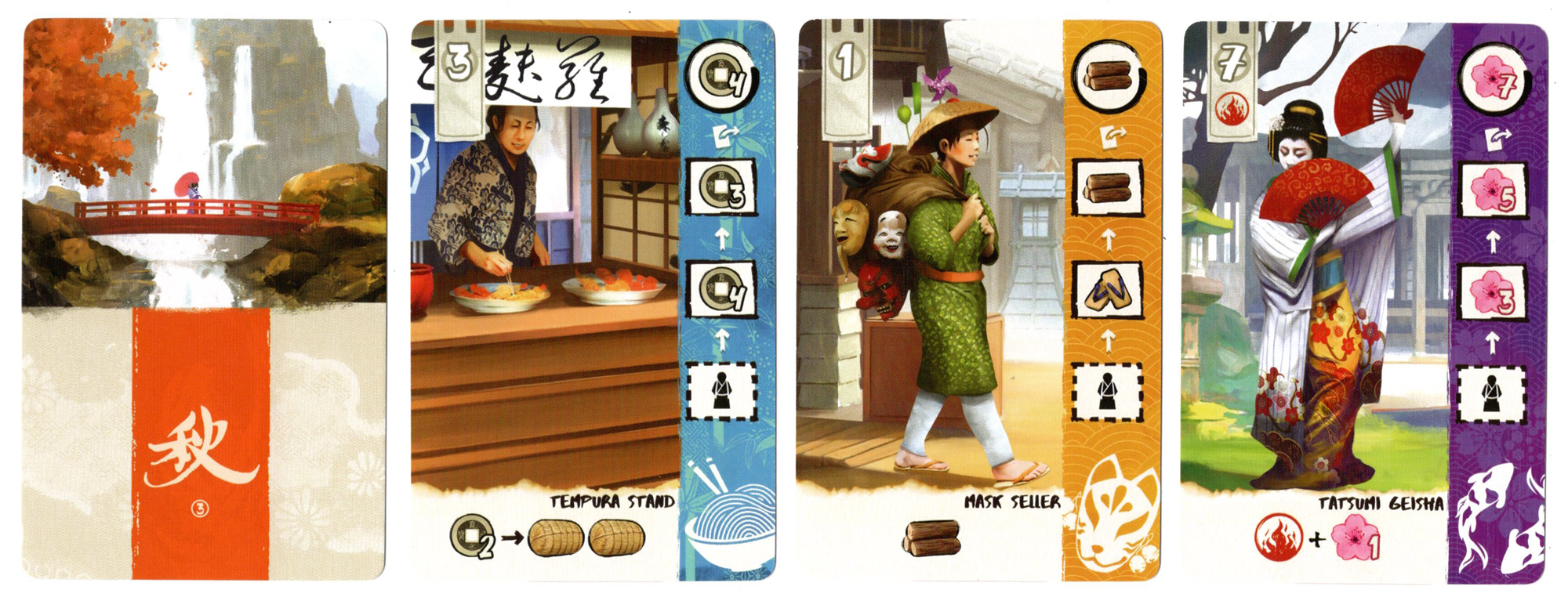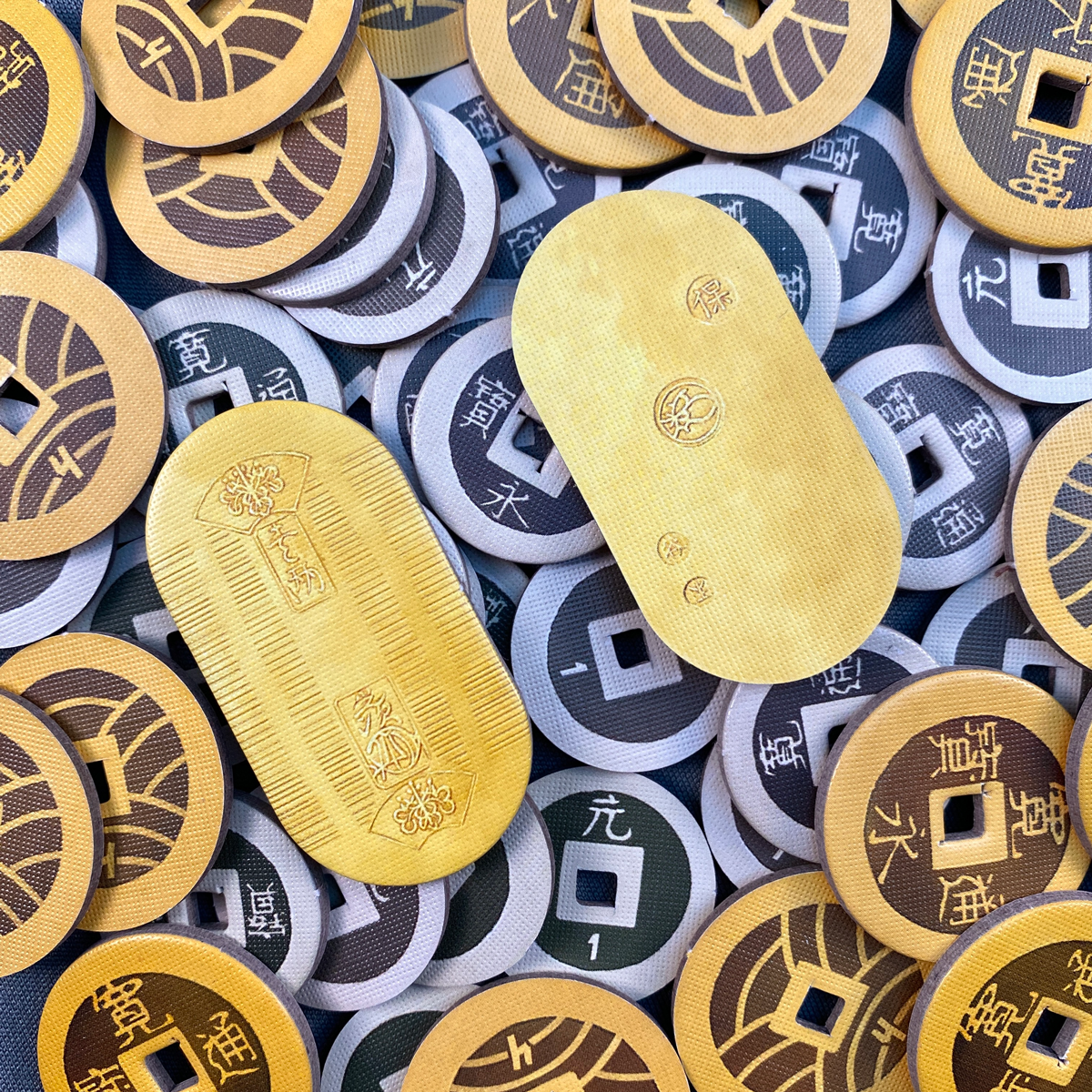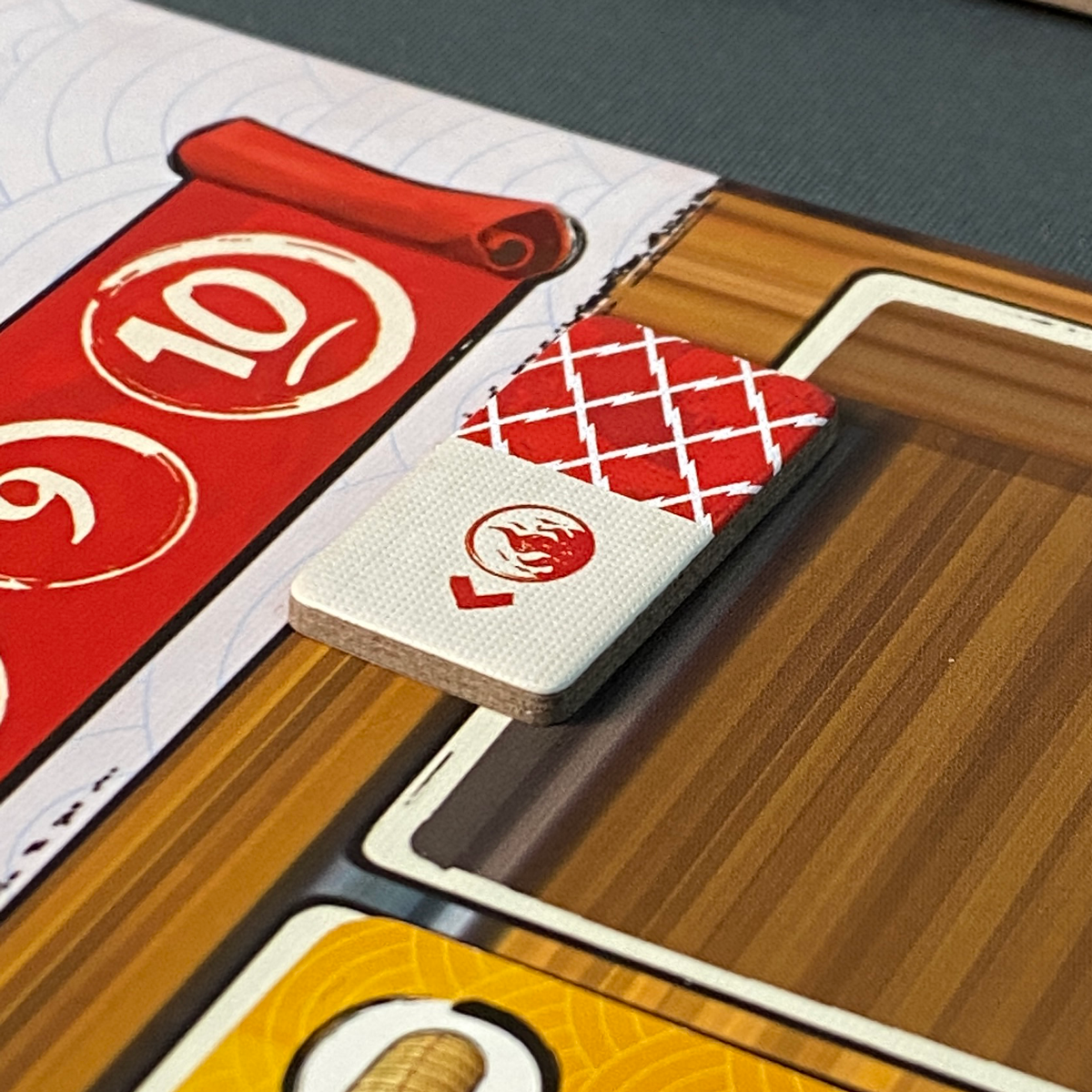Iki Board Game Review
Iki: A Game of Edo Artisans was first released in 2015, but back then I was too busy celebrating my 21st birthday again for it to have registered in my psyche. So, I didn’t really know of its existence until the buzz started for the rereleased version towards the end of 2021. I remember watching videos about board gamers being excited for one of their ‘Grail Games’ to finally get a reprint with updated artwork.
I don’t know about you, but for me researching the next game to buy is a side hobby of equally enjoyable magnitude. I delved slightly deeper into the game and found myself being immersed into the world of hype usually reserved for the bigger names of the industry. Next thing I know it has been delivered by Out of Town Games and is on my shelf of shrink without actually knowing as much about it as I would normally!
Hopefully you’re here because you aren’t going to be as flippant as me. I assume you want to quite rightly know whether it will be for you before it arrives on your doorstep! Wise, very wise. Let me tell you about Iki: A Game of Edo Artisans…


©boardgamereview.co.uk
Setup
Setup takes a little while, but by no means is a chore. First thing to do is decide which side of the board you are playing, two player games have one side, while multiplayer games have the other. A few tokens need to be dotted on and around the board too. Then, cards need to be arranged by type and shuffled. Finally, distribute the relevant tokens to each player, along with a player board. In terms of set up that’s it. It’s a bit more involved than my brief synopsis. Tear down takes a little more time too, but still by no means a hardship.


©boardgamereview.co.uk
Gameplay
In a nutshell, two to four players will be taking a stroll around the markets of Edo (now Tokyo). They will hire artisans who sell goods to lure all players into buying their wares, until they overwork them and force them to retire. All the while you will be balancing how far you move with optimum shopping locations, and also maximising set collection and resources as best you can. All this in the knowledge that fires will break out and occasionally undo all your hard work.
It’s a bit more complicated than that! The game is played over 12 rounds representing the months of the year and the four seasons provide punctuation marks in the play. Echoing the disastrous fires that Edo suffered, fire regularly sweeps the districts and you will need a good rating on the fire safety track to protect your shops or see them burn.
Turn order is variable, and is based on your fire safety rating (except at two player). The person with the highest gets to choose how many places to move around the board first. At this point you can recruit new employees or gain some quick and easy money. When you move, you can activate the shop you land at, or can purchase things like fish or tobacco pipes for end game scoring.
Every loop around the board will train workers in your shops. Employees are also trained when activated by other players. When they reach the top of their career path they retire and move to that player’s personal board for further set collection and ongoing benefits. Placing workers in shops also offers scoring opportunities if they are in districts with vendors of the same type. You will get even more points if those same-trade vendors are all yours!
Finally, you will have the opportunity to erect buildings with resources you have accumulated for further end game scoring opportunities.


©boardgamereview.co.uk
What it’s like
Let me start by saying there is nothing new within the box of Iki: A Game of Edo Artisans. No amazing mechanic that you won’t have seen before. However, what it does do is mesh and meld a host of really fun mechanics and decisions into a board game in a smooth and seamless way. Offering a point salad of scoring opportunities.
What Iki does offer, is one of my favourite elements in board games: a plethora of great options, but not enough turns to do them all. The seasons are short and you can probably loop the market once per season if you’re lucky. So you will have to choose between collecting fish or tobacco pouches, gathering resources or fire protection each and every turn. This balancing act of opportunity is really beguiling. Iki: A Game of Edo Artisans therefore shines super bright by being beautifully edited and offering tight gameplay. Every single turn you make and every card you place matters, there is little margin for error or lack of consideration.
The riveting strategy can cause a little down time between turns. Most people will be grateful for this additional thinking time. It allows moments to optimise every single movement, as analysis paralysis can set in quite hard. However, more often than not the game saunters along at an enjoyable pace.
The sporadic fires are annoying, especially if you have built beautiful synergies between your trades. However, it is massively luck based whether you will be hit by fire or not. The fire randomiser certainly adds a kicker and is perhaps more critical at higher player counts. At two players it seems less of a burden and having more fire protection doesn’t have the same importance as it doesn’t affect turn order.
I really like the two player variant and alternative side of the board. It is a different game offering different strategies but I’m equally pleased to play it at two as I am at four. Iki really does work at two, three and four players quite brilliantly.
It takes a little while to play, but at two player I can now complete a game in about an hour. More players mean more time and it’s probably another 15-30 minutes per player.


©boardgamereview.co.uk
Table Presence
The rulebook has quite a lot to digest, but that’s necessary as there is a lot to learn and explain. Without question it is a game I would rather have been taught than learn, and my first game was an utter fiasco of incorrect rule interpretations and mistakes. I still had great fun playing, but I needed to re-read the instructions having had a game under my belt for it to start to click. That’s no reflection of the rulebook, it’s just got a lot to take on board, but bizarrely once you’ve absorbed the information the game itself flows quite naturally. It’s now a game I feel like I have learnt and could have a little break from and still remember how it plays. The appendix at the end of the rulebook does a really great job of deciphering the numerous cards.
I really liked the artwork of the original board game, imitating the Ukiyo-e prints of the period. Equally though, I understand the necessity for updating it. I think David Sitbon has done an extraordinary job illustrating all the cards and with the designer, create clear and concise iconography that works.
Iki: A Game of Edo Artisans is an attractive game. The cards are plentiful and nicely illustrated. I appreciate the seasonal artwork on the reverse of the cards too. It’s not just the cards but the board is interesting. I think the colours of the districts could be clearer when resolving the fire but this is just a minor gripe. The meeples and wooden components are also awesome and I really like the player colour options of red, blue, purple and yellow as they zing on the board.
The money tokens are fine, but I would be salivating at the publisher’s shop window if they offered a metal coin upgrade… assuming they had a shop window with them displayed in. I’m literally drooling at the thought of it! Also, punching the little squares out of the middle of the coin punchboard was a little tiresome but my top-tip is to use the pointy bit of the lid of a standard Bic biro.
Don’t get excited for a cool insert to store all the contents of the box in, there isn’t one. It doesn’t actually bother me, but vertical stackers may be dismayed!


©boardgamereview.co.uk
Final thoughts on Iki: A Game of Edo Artisans
With the exception of the fear and risk of near-uncontrollable fires sweeping through your shops and leaving you in utter carnage, playing Iki is a relatively calm stroll around the streets of ancient Tokyo. However, during that calm stroll you will watch the cogs whir in other player’s as they try to maximise every move, it’s how you will look on your turn too!
There is a lot to think about when playing Iki, it is this streamlining of options that makes the game so interesting, and so, so good. The point salad approach to end game scoring with various set collection and bonuses to consider, provides the strategy to make Iki a board game worth returning to, time and time again. It features on my 2022 10 x 10 challenge for exactly that reason.
I appreciate the lack of anything new might be a turn-off for some, but sometimes innovation and that unique gimmick can be replaced with solid gameplay. That’s exactly what Iki: A Game of Edo Artisans does. It relies on quality strategy and tantalising components. The end result is a fantastic board game that I will play for many years to come. I’m therefore delighted that it got a renewed lease of life with this new edition.


©boardgamereview.co.uk
Key Facts
Number of players: 2 to 4
Board Game Review Recommended Age: 12+
Publisher’s Recommended Age: 14+
Playing Time: 75 minutes
Setting Up and Take Down Time: 10 minute
Designers: Koota Yamada
Publisher: Sorry We Are French
RRP: £50.00
Summary
This is a medium-weight board game with fantastic strategy. There are so many paths to victory to explore, you will return to Edo time and time again. Overall, Iki: A Game of Edo Artisans is a delightful game with an attractive aesthetic.
-
Artwork and Components
-
Complexity
-
Instructions
-
Interaction
-
Value for Money
Overall
Pros
- Oodles of strategy
- Lovely components
- Great at 2, 3 and 4 players
- Hour and a bit play time
Cons
- Can harbour analysis paralysis
- The randomness of fires
- Hard to distinguish the colours of the districts
- No box insert
Need more games?
If you already own Iki and enjoy it, or are looking for other inspiration, you might also like these similar games:
- Viticulture
- Raiders of the North Sea
- My Farm Shop
- Great Western Trail
Buy Iki: A Game of Edo Artisans
If you want to buy Iki: A Game of Edo Artisans after reading our review click on one of our affiliate links below (note there has been no affiliate links until this point)
Reviewer’s Note
For clarity: we don’t get paid for our reviews.
We may however earn a tincy wincy commission if you buy a game having clicked one of our affiliate links like the one above… this hopefully gives us a bit of pocket money towards hosting costs and new games to review!
As an Amazon Associate I earn from qualifying purchases.
Board Game Review is a brand ambassador for Out of Town Games.
We also are an affiliate of Board Game Prices, a price comparison website for Board Games.
These affiliate advertising programs are designed to provide a means for sites to earn advertising fees by advertising and linking to their websites.






